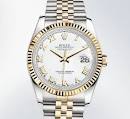In 2014, Ohio State won the first ever college football playoff to secure a national championship for the Buckeyes. And two weeks into the 2015 season, they are the favorite to win the title again this year. Luck? No. Ohio State’s success is due to great players and coaches.

It is unquestionable that Ohio State has been blessed by great head coaches. The latest in that great tradition is Urban Meyer, who has brought his winning record to an already storied program with undeniable success.
Along with coaching, Ohio State owes its on-field success to a tradition of recruiting the best players. Evidenced by multiple national championships, consensus All Americans and Heisman Trophy winners, Ohio State stands as one of the best recruiting programs of all time.
Their success on the football field stems from a desire and determination to succeed and an ability to overcome adversity. The school’s administration, alumni, and supporters know that triumphs on the football field are due to securing the best coaches and players. They know that the most talented players are attracted to excellence: a winning tradition, the best facilities, and academic support.
Like the Ohio State University, the best companies insist on excellence. Similar to the top coaches, their executives seek out and recruit the best talent. Hiring managers are charged with searching for candidates who believe in the company’s mission, fit within the company’s culture, possess varied backgrounds and experience, and bring fresh perspectives and ideas.
Finding top talent is an art, as well as a science. The process requires more than collecting resumes. Like Coach Urban Meyer, successful company leaders understand that excellence attracts excellence. To lure the best, they offer the best facilities, tools, and compensation. The leaders of flourishing companies recognize that winning requires top-notch players. They understand the cost of recruiting blue chip talent is little compared with the benefits they bring. And like the reigning champions of the college football world, they employ top-notch recruiters to land the best players out there. That’s what Schaffer Associates can do for you. Contact us today. Call us at (704) 535-9939 or find us at www.SchafferAssociates.com.
